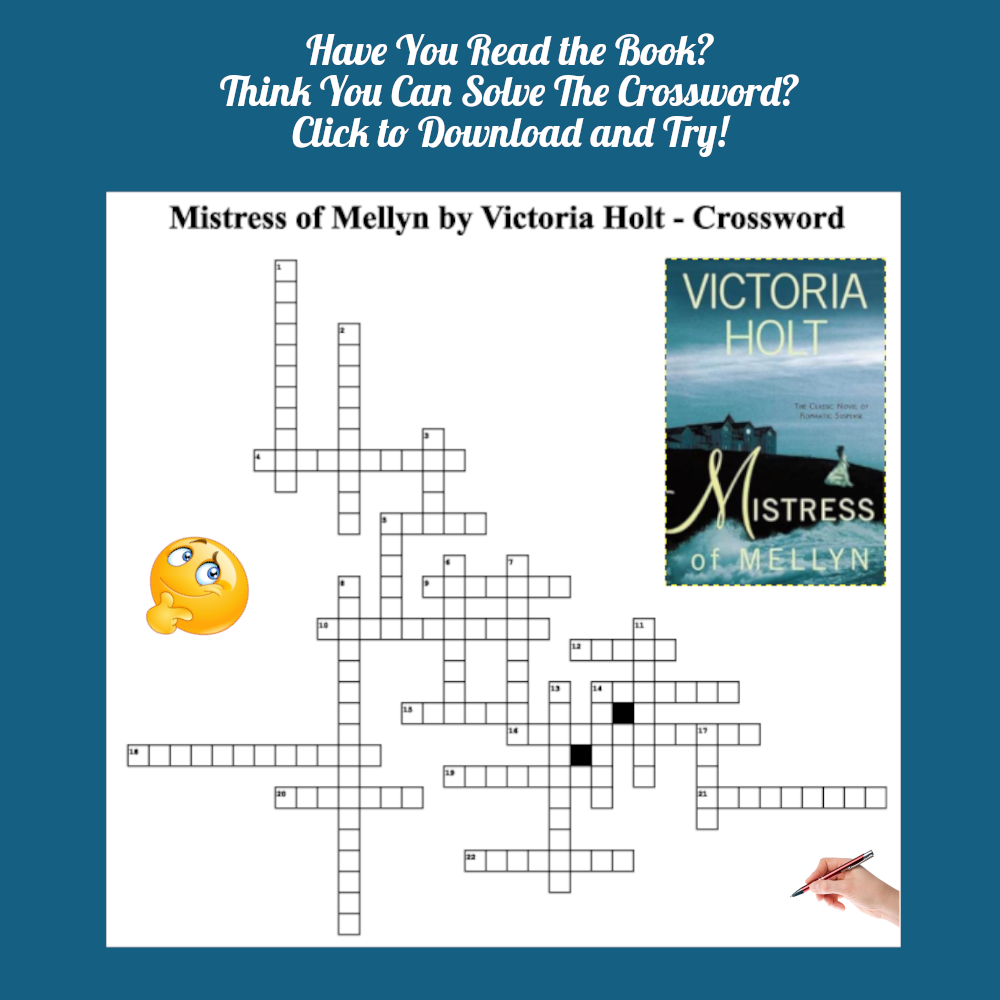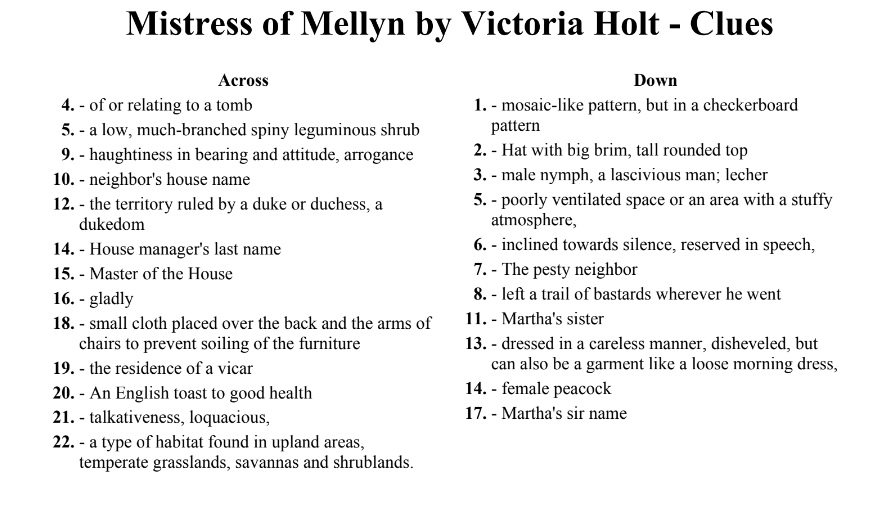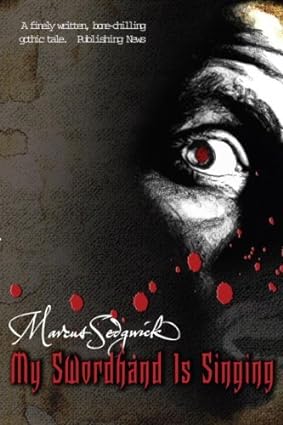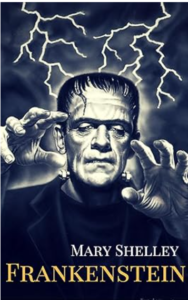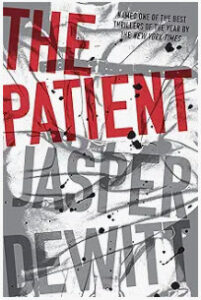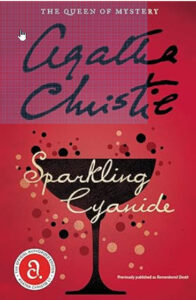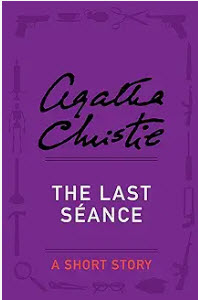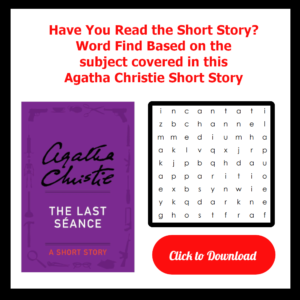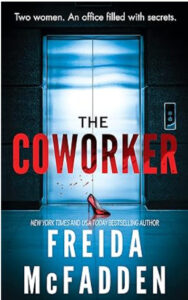DESCRIPTION FROM AMAZON.com:
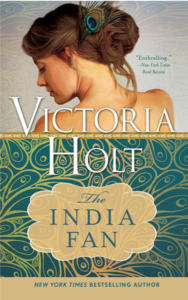 A gothic thriller full of romance, murder, and mayhem. It begins with a priceless heirloom that turns into a horrible curse…
A gothic thriller full of romance, murder, and mayhem. It begins with a priceless heirloom that turns into a horrible curse…
A parson’s daughter, Druscilla Delaney is enthralled by her wealthy, glamorous neighbors—the Framlings—and their handsome son, Fabian. They gift her a priceless heirloom, a beautiful fan, but what happens when this fan turns into a curse? Everything changes.
Beautiful as its peacock feathers may be, the fan hidden deep in the Framling mansion has a legacy of death and destruction. Druscilla has no idea she’s been marked by it. Her life is in danger.
Will the fan’s dark past prove less of a danger than Fabian Framling himself though? Dark, brooding, and dominating, could he be the one to save her from the fan’s cruel fate or do the opposite: cause her death?
Including elements of historical romance and romantic suspense, The India Fan is a spellbinding tale from the Queen of Gothic Romance. Fast paced and gripping for fans of Georgette Heyer, Mary Stewart, and Daphne Du Maurier.
“A mesmerizing story of blackmail, romance, and deception.”—Associated Press
REVIEW AS A READER:
 I purchased this book based on reading another of Victoria Holt’s books. I wasn’t instantly in love with this book but the author’s writing style is so beautiful, that alone kept me going. However, I slowly fell in love with the characters — but not because they were great people, most of them were flawed in one way or another. I fell in love with the story itself and how it all unfolded to the main character, Drusilla.
I purchased this book based on reading another of Victoria Holt’s books. I wasn’t instantly in love with this book but the author’s writing style is so beautiful, that alone kept me going. However, I slowly fell in love with the characters — but not because they were great people, most of them were flawed in one way or another. I fell in love with the story itself and how it all unfolded to the main character, Drusilla.
Although this was not a classic gothic story, it was a story about aristocrats and the working class, the differences between them, and how it affects everyone involved in the story. So it had a gothic feel to it because there was a mystery or two that laced all the way through the story.
The story contained a few historical elements but only in a general way. The drama took place at a time when the British ruled India and the Indians had enough of it. There was tension in the air and this added to the suspense of the book. Without too much dry historical information, the conflict between the two sides played out in the drama among and between all of the characters. It’s a story wasn’t political at all. It explained only in a cursory way both sides of the conflict. Ms. Holt presented the story from characters on both sides of the conflict.
This was a family saga. The narrative took place over half a lifetime, and the characters grew and changed within the changing drama. There were two love interests on Drusilla’s mind and it wasn’t revealed which way she would go until the last few pages. I was guessing the entire way through.
This is the third book I’ve read by Victoria Hold. The book was as beautifully written as the other two. The story is filled with interesting characters right out of Hollywood. The narrative was gripping, suspenseful, mysterious and hauntingly sad at certain times. I absolutely loved this book and I would give it 5 stars and will read it again I’m sure.
MY REVIEW AS AN AUTHOR:
I learned quite a bit as an author from this novel. I didn’t realize it would be a saga when I picked it up but the story was so riveting that it went fast. It wasn’t until about three-quarters of the way through the book that I realized the story had covered decades of time.
It was interesting and enlightening to see how Ms. Holt handled the passage of time. She cleverly and sometimes casually mentioned the passage of a few years here and there, and the story continued its natural flow.
The story was also broken into sections that made it easier for the reader to remember where the drama was taking place. There was a section called India; and then another section titled England when they returned. Even if a reader put the book down, it would have been easy to figure out where everyone was with a flip of a few pages.
Ms. Holt had a way of adding just enough historical information to enrich the story and yet, not enough to call this a historical fiction. This was a big eye opener. I’m so used to reading these big research dumps in fiction that I was surprised but pleased by Victoria Holt’s brevity. She used no real dates or formal event names. There was only a passing mention of what was in the air around them and how it was affecting everyone. As an author, I stood in awe of her ability to write with this type of know-how and flair.
HOW I KEEP TRACK AS AN AUTHOR:
I wanted to pass on my technique in case this blog post is being read by other authors. I would love to hear other authors’ reviews of books as a reader and author.
I read on the Kindle app on a 10 inch tablet. I use the yellow highlighter to underscore any character names, story-changing action and anything else I want to remember. Then I use my blue highlighter as a author to highlight my favorite turn of phrases, which I will post below. I use blue to also keep track of any words or historical terms I want to note in a large file I’ve been nursing lately.
Reading in the kindle app allows you to look up any word that comes up that’s unfamiliar. I love this technology and I highlight in blue if I want to make sure I put this on my list of words to learn and yellow if I manage to add a note with the definition if it’s only a word or two.
Occasionally, I will use my orange highlighter to point out something that is unusual about the book or a section I want to make a note about or revisit after I finish the book. This allows me to go back and take the time to see what captured my attention during the read and take another look after I finish the story.
ANOTHER EXERCISE I THINK IS HELPFUL:
I plan to write a bit more gothic romance myself when I’m done with my present book – the fifth and final book in my Newport Vampire Series. As I read through gothic books at this time, I’m keeping a running list of architectural terms, castle-part terms, gothic atmospheric terms, anything that I may want to reference as I enter into this new area of writing.
I would love to know if anyone else does this!
I’ve already rated the book five stars as a reader and I would also rate this book as a five star as an author read. It is a great book to see how an author adds history to enrich the story, how to handle the passage of time, character development, how to present a decade’s long family saga and more. So if you’re just breaking into the gothic romance area or you want to see the difference between adding a little history verses writing an actual historical novel, this is great choice.
 MY FAVORITE TURN OF PHRASES:
MY FAVORITE TURN OF PHRASES:
- She was spoken of in hushed whispers as though those who mentioned her feared they might be taking her name in vain; in my youthful mind she ranked with the Queen and was second only to God.
- I looked fearfully at the portraits. They seemed like real people regarding me severely for having trespassed into their domain. This shows the author giving the pictures a personality while passing over background information.
- There was a lump in my throat. I did not cry. Crying for me was for lighter emotions. Something within me was deeply hurt and I believed that the wound would be with me forever.
- She did not mention Him because he was dead, and when people died, I realized, their sins were washed away by the all-important respect.
- It was what is referred to as the cockney spirit; and it certainly seemed to be a product of the streets of London.
- She had small hands and feet and sailed rather than walked, her voluminous skirt making a gentle swishing noise as she moved.
- I thought of a sharp retort, but I spoke gently, for there is something more than ordinarily pathetic about the arrogant when they are brought low. I was looking at a very frightened girl, as well she might be.
- It was a bitter blow to my pride rather than to my deep emotions.
- He looked at me rather conspiratorially . . .
- . . . poor old man who seemed nothing but rags and bones.
- Often great beauty will disguise emptiness and sometimes evil.
- Then there was a shattering explosion. [spoiler removal] threw up his hands. I heard the knife fall to the ground; he reeled drunkenly before he collapsed in a heap at my feet.The fact that we were women and children and elderly people would not save us. This was a war against a race, not against individual people.
CROSSWORD BASED ON THE INDIA FAN BY VICTORIA HOLT
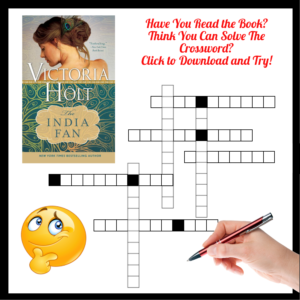 Click here to do the crossword puzzle online
Click here to do the crossword puzzle online
Click here to download the crossword, the clues and the answers as a pdf from Google Drive

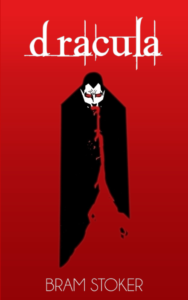 DESCRIPTION FROM AMAZON.com:
DESCRIPTION FROM AMAZON.com: I usually start with my review as a reader but today I have to start with my review as an author. I have read this book at least twice, maybe even more, and find the story wonderful — but only because I’ve seen movies that stuck very closely to the storyline.
I usually start with my review as a reader but today I have to start with my review as an author. I have read this book at least twice, maybe even more, and find the story wonderful — but only because I’ve seen movies that stuck very closely to the storyline. So for anyone who wants to see the action laid out quickly, read below. There are spoilers, so don’t read this part if you don’t want to spoil the book plot for yourself. I personally don’t care about spoilers as sometimes I enjoy books or movies better when I know ahead of time what to watch for!
So for anyone who wants to see the action laid out quickly, read below. There are spoilers, so don’t read this part if you don’t want to spoil the book plot for yourself. I personally don’t care about spoilers as sometimes I enjoy books or movies better when I know ahead of time what to watch for!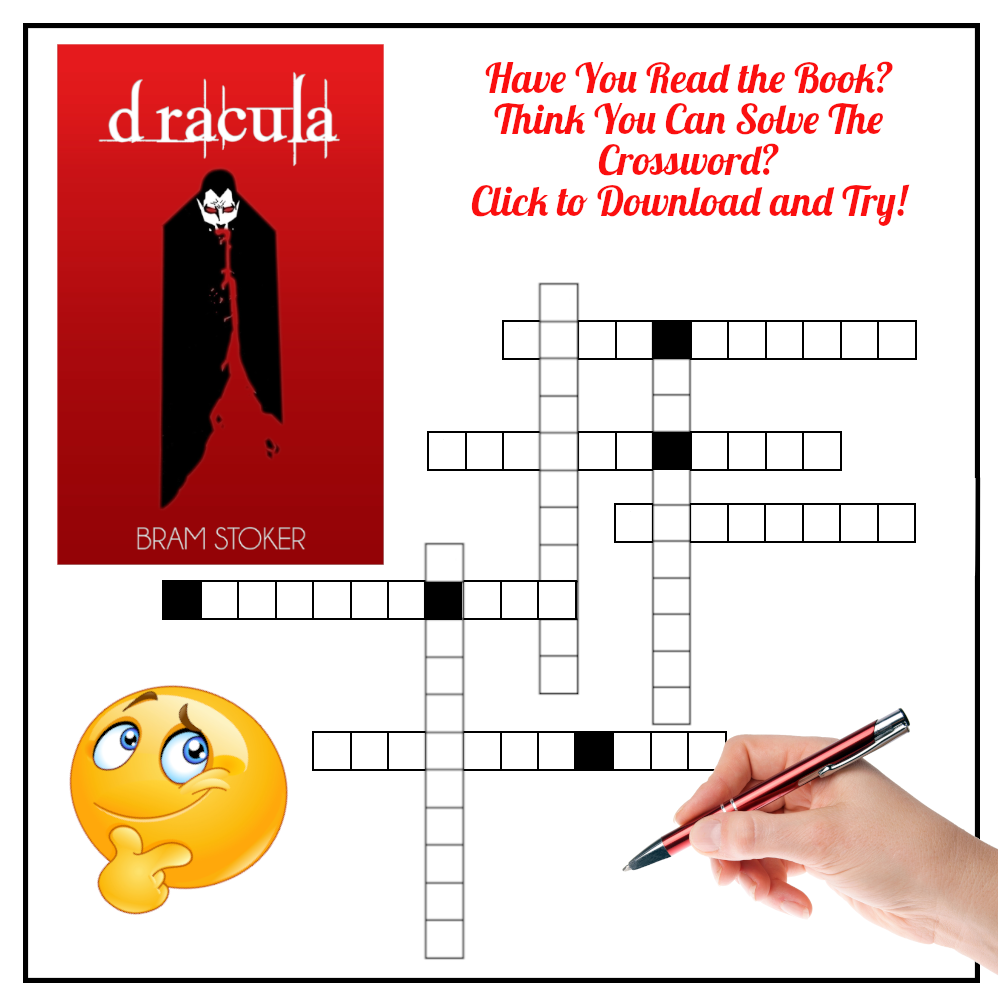
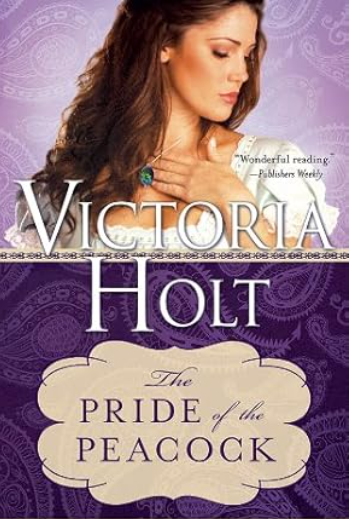 Amazon Description of the Book:
Amazon Description of the Book: SUSPENSE: For suspense, I give this a nine out of ten. This story twisted and turned in a few different directions, enough to keep me reading chapter after chapter, long after I planned to put the book down.
SUSPENSE: For suspense, I give this a nine out of ten. This story twisted and turned in a few different directions, enough to keep me reading chapter after chapter, long after I planned to put the book down.

